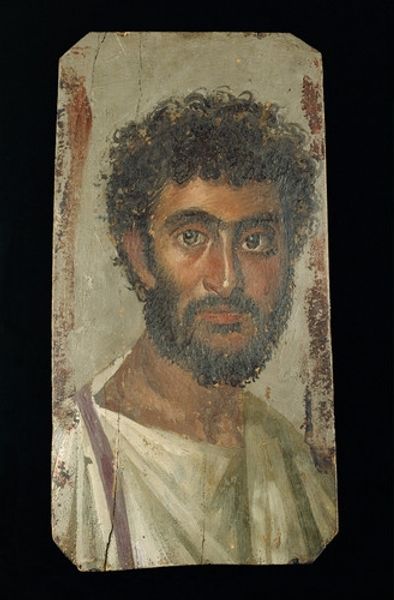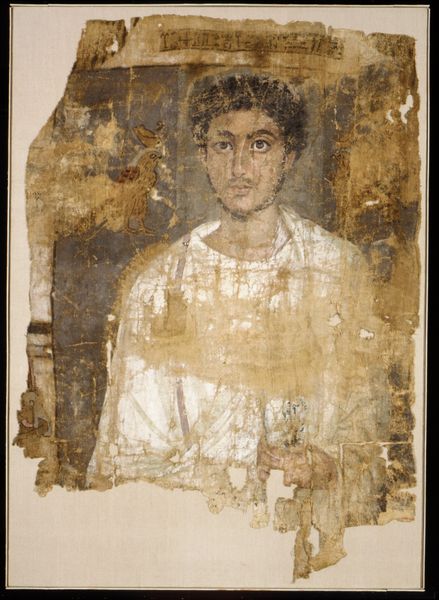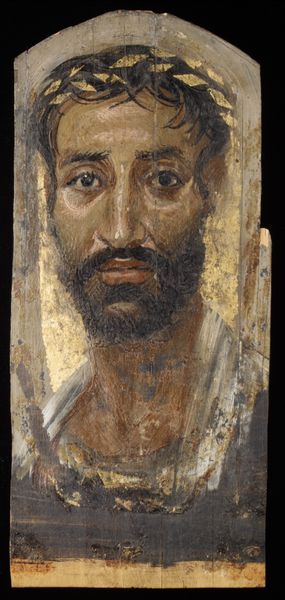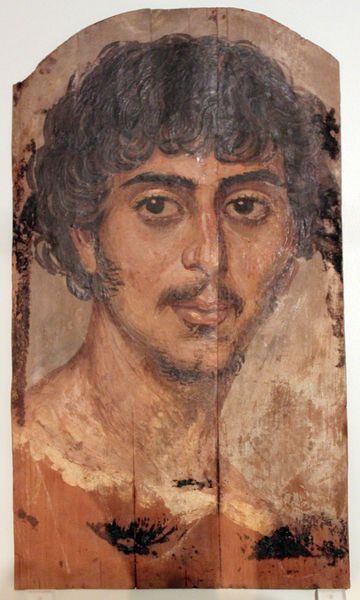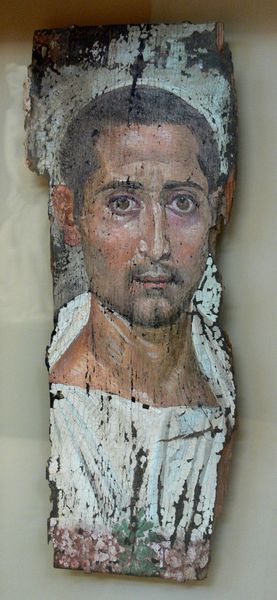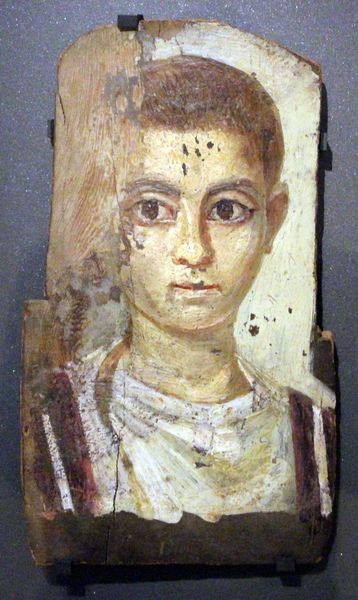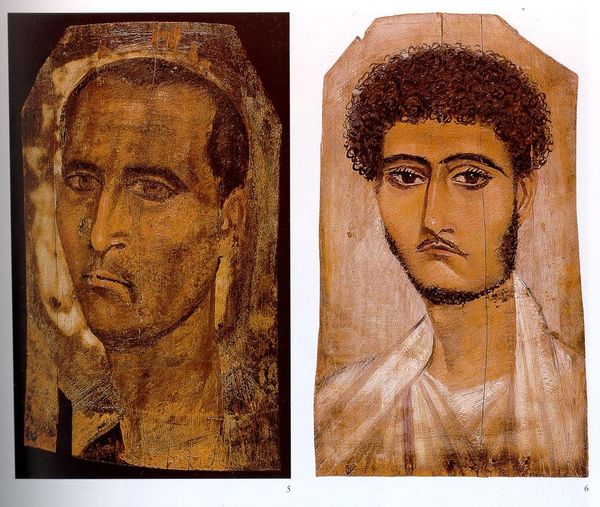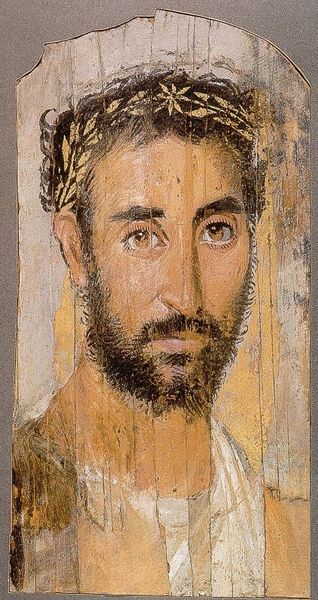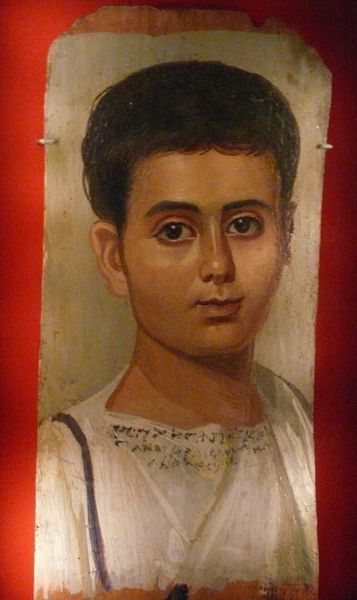
painting, oil-paint
#
portrait
#
painting
#
oil-paint
#
ancient-egyptian-art
#
figuration
#
oil painting
#
ancient-mediterranean
#
portrait art
Copyright: Public domain
This Fayum Mummy Portrait, made around the 1st to 3rd century AD, presents a striking image of a man painted on wood, now residing at the Brooklyn Museum. The portrait's direct gaze and the delicate rendering of his features invite an immediate connection. Analyzing its formal elements, the artist employs a restricted palette, primarily focusing on earthy tones to depict the man's face. Gold leaf is used for the wreath, drawing attention to the head and its symbolic status. The composition is simple, centered on the face. Brushstrokes create a lifelike texture, while the flat background highlights the figure. The portrait engages with the semiotics of the time, combining Egyptian burial customs with Roman portraiture. This fusion embodies a cultural intersection, reflecting complex identities. The subject's wreath, a sign of honor, destabilizes fixed notions of identity and place within the Roman Empire. The interplay between its material presence and symbolic representation invites us to consider how artworks function as dynamic sites of cultural and philosophical exchange.
Comments
No comments
Be the first to comment and join the conversation on the ultimate creative platform.

